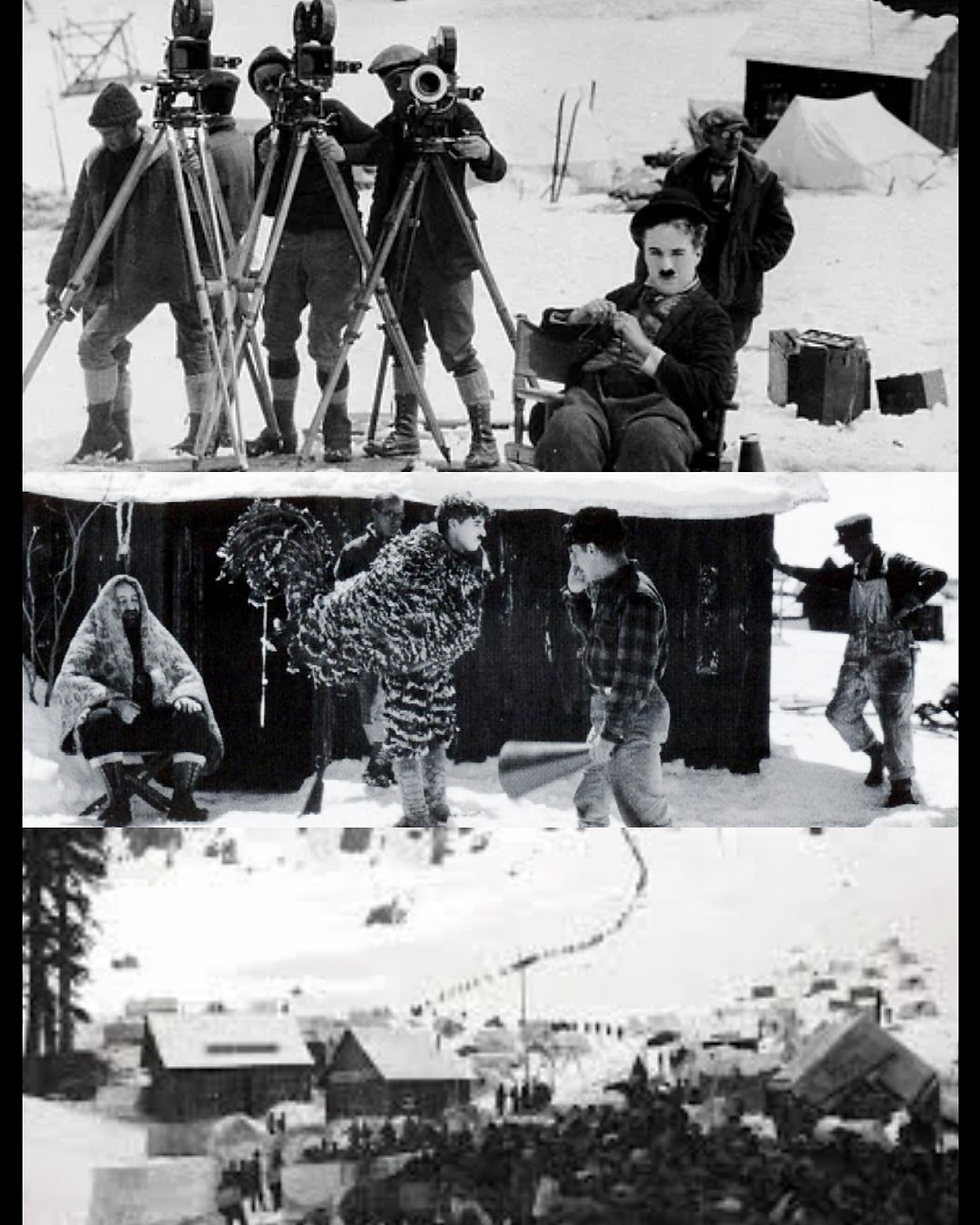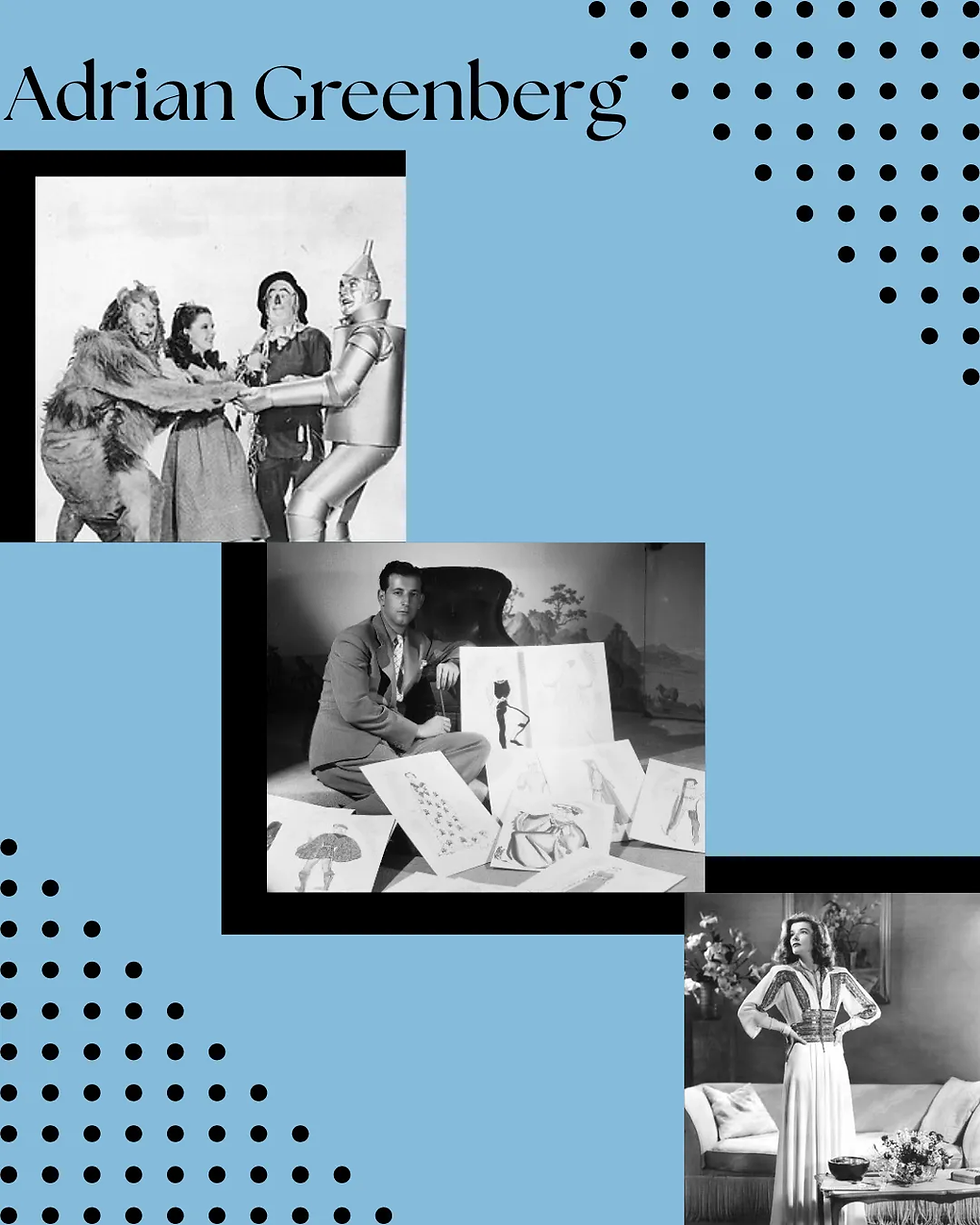Celebrating the 100th anniversary of Charlie Chaplin's The Gold Rush
- Tina Ter-Akopyan
- Jul 11
- 4 min read

June 26, 1925 – Glitz, glamour, and Eskimo-dressed show girls filled the newly built Egyptian Theater in Los Angeles for the premiere of Charlie Chaplin’s epic comedy The Gold Rush. The biggest names in Hollywood from Mary Pickford to Cecile B. DeMille attended the over-the-top opening hosted by Sid Grauman, the owner of the Egyptian Theater. Dressing the theater in the snowy theme of the film and giving every attendee a special souvenir program, Grauman set the standard for the extravagant Hollywood premiere and made the event the talk of the town. However, when everyone settled in their seats and the theater curtains opened, the real Hollywood magic appeared on the silver screen. Perfectly paced and visually striking, The Gold Rush is a masterclass comedy that has stood the test of time.
Exactly 100 years later, the film returned to its original home at the Egyptian Theater, where hundreds of audience members (including myself) celebrated the milestone anniversary of this iconic film. While the audience was not greeted with the same glamour and pomp of 1925, they had a bigger treat in store. For the film’s centennial, the theater hosted the North American premiere of a new 4K restoration, which pieced together lost parts of the 1925 print to best recapture the film’s original form.

In 1942, with hopes of introducing The Gold Rush to a new generation, Chaplin converted the movie into a “talkie” using narration and sound-effects and re-edited most of the scenes. Consequently, many of the original 1925 prints of the film were either destroyed or lost. To revive this lost masterpiece, distributor m2K films worked closely with various international archives, such as Cineteca di Bologna, BFI National Archive, and the Museum of Modern Art. Archivists painstakingly patched together the remaining pieces of the 1925 print as well as improved the film’s image quality. Spanning over thirty years, the restoration process finished just in time for the film’s anniversary.
Unlike Chaplin’s other films, which center around urban slums and city life, The Gold Rush takes place in the blizzard-ridden alps of Alaska. Inspired by the historic photographs of the Klondike Gold Rush of 1896, Chaplin conjured the story of the Lone Prospector, a variation of The Tramp character, who ventures out to Alaska in hopes of finding gold. Stuck in a violent blizzard with a fellow miner Big Jim McKay (Mack Swain), the Lone Prospector tries to survive and fight off starvation and insanity. Once back in village, he falls in love with Georgia, the it-girl of the town (Georgia Hale), and hopes to win her over by heading back into the mountains with Big Jim to find their fortune.
While the tribulations the Lone Prospector faces on his journey are dire, Chaplin approaches his situation with lighthearted humor. By satirizing the plight of the gold miners, Chaplin reflects on the desperate and delusional nature of humans, as they relentlessly put themselves through life-threatening situations for a piece of metal that might not even exist. One of the most iconic scenes of the film occurs when the Prospector and his companion, starving to death, decide to eat a shoe. The audience watches as the Prospector boils the shoe and serves it proudly as if it were a roast duck. To make audiences believe he ate an actual shoe, Chaplin found a local candy shop who helped him create a licorice replica of his shoe. A perfectionist, Chaplin went through 63 takes of the scene, causing him to get a stomachache from an overconsumption of licorice.
Whether the Prospector is hanging off a cliff or running away from his delusional companion, who wants to eat him, Chaplin crafts scenes that balance nail-biting suspense with laugh-out loud comedy. While humor from the past does not always translate, the rapturous laughter of the audience from the 100th anniversary screening proves that Chaplin’s skits transcend the boundaries of time.

Similar to the challenges the Prospector faced on his journey, the production of the film was not immune to its own set of obstacles. Filming for over a year, The Gold Rush became the most expensive comedy in the silent era of Hollywood, with a budget of over $900,000 (which translates to roughly $16.5 million today). For the first time in his career, Chaplin decided to film on a location. Determined to recreate a historic image of miners climbing up the Chilkoot Pass, Chaplin gathered over 600 extras to climb up a mountain pass in Sierra Nevada. Later in the studio, special effect technicians had to figure out how to create a miniature version of the Prospector’s cabin hanging on a cliff as well as build artificial mountains. Over 500 laborers joined the production to build the snowy alps, using more than 239,577 feet of lumber and 200 tons of plaster.

The epic cinematography, the impressive set design replicating the snowy wastelands of Alaska, and the tightly choreographed scenes have established the film as “the gold” standard of comedies. However, what makes this film resonate with audiences a century later is its reflection of loneliness. With “lone” literally in his name, the biggest challenge the Prospector faces is overcoming his isolation and finding love. The most heartbreaking moment in the film occurs when the Prospector hopelessly waits for his crush Georgia to come to his dinner party on New Year’s Eve. As the night rolls along, the Prospector falls asleep, and we are transported into his dream, where he imagines the joyous time he would have entertaining Georgia and her friends with his silly skits. In that moment, we see that the Prospector’s greatest desire is not money or fame but rather to feel accepted and loved. However, when he wakes up, all he sees is an empty dinner table.
Chaplin was the rare artist who wrote, acted, directed, produced, and even scored…a quintuple threat! Chaplin had an intuitive understanding of how to nail the pacing of a skit and ground the slapstick humor with tender moments. The beautiful restoration of The Gold Rush not only preserves an important artifact of Hollywood history but also guarantees that new audiences can interact and connect with Chaplin’s original vision. In an age of filmmaking oversaturated with extravagant visuals and regurgitated storytelling, the practical effects and simple narrative of The Gold Rush stand out and showcase how stories can resonate with audiences even with the most limited tools and resources.




